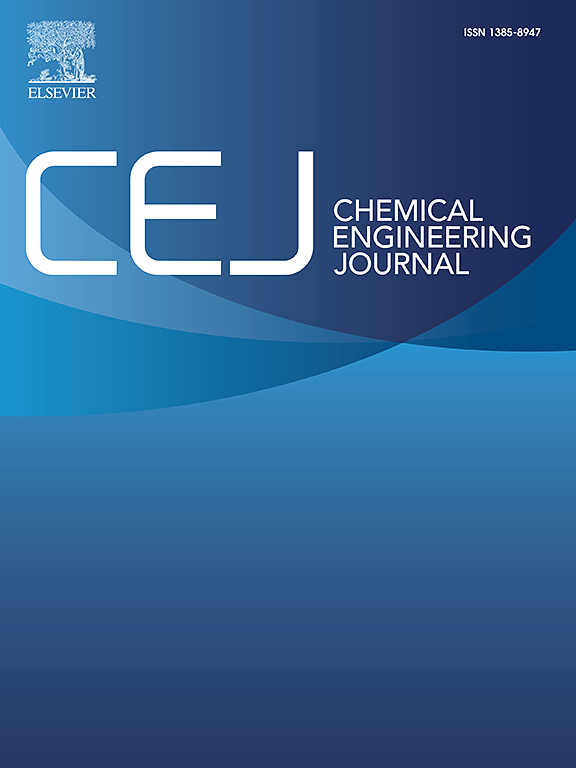Single-step preparation of activated carbons from pine wood, olive stones and nutshells by KOH and microwaves: Influence of ultra-microporous for high CO2 capture
IF 13.3
1区 工程技术
Q1 ENGINEERING, CHEMICAL
引用次数: 0
Abstract
Biomass residues are crucial feedstocks for facing climate change challenges due to high-value products, such as producing activated carbons (AC) for carbon capture. Two stages of pyrolysis followed by activation at high temperatures are the most used technique for converting lignocellulosic precursors into porous activated carbons. This process has shown to offer the highest surface areas; however, a two-stage process is undesirable as is an energy-intensive processes. Product characteristics are affected by feedstock and reaction rate conditions. In the present study pine wood (PW), olive stones (OS) and pecan nutshells (NS) were evaluated as feedstocks in the production of AC for selective post-combustion CO利用 KOH 和微波以松木、橄榄石和果壳为原料一步制备活性炭:超微孔对高二氧化碳捕集率的影响
生物质残渣是应对气候变化挑战的重要原料,因为它具有高价值的产品,例如生产用于碳捕集的活性炭(AC)。将木质纤维素前体转化为多孔活性炭最常用的技术是先进行两阶段热解,然后在高温下进行活化。这种工艺可提供最大的表面积;但是,两阶段工艺和能源密集型工艺都不可取。产品特性受原料和反应速率条件的影响。本研究评估了松木(PW)、橄榄石(OS)和山核桃果壳(NS)作为原料,通过微波加热的单步热解-活化法生产用于选择性燃烧后二氧化碳捕集的 AC。使用氢氧化钾(KOH)完成了对生物质原料的直接浸渍。使用 300 W 的微波功率和 8.8 GJ t-1 的特定微波能量输入,在 8 分钟内合成了 AC。样品具有较大的比表面积(SBET),高达 1340 m2g-1,其中 70% 为超微孔(<0.8 nm),这是高二氧化碳吸附能力的基础。在测试的生物质中,PW 的性能最好,理化特性和二氧化碳捕获研究表明,基于 PW 的 AC 具有 79% 的碳,无定形结构,并具有较大的超微孔,因此具有较高的 CO2/N2 选择性(12.5),是二氧化碳吸附量最大的 AC 之一(0 和 25 °C 时分别为 6.2 和 4.2 mmol/g)。在高达 100 °C 的温度范围内对二氧化碳性能进行了研究,同时经过 15 次吸附-解吸循环后确认了循环再生性能。这项研究强调了通过快速、低能耗的单一微波热解活化过程从不同的木质纤维素资源中开发出 AC,该过程可产生超微孔结构,用于燃烧后捕获二氧化碳。
本文章由计算机程序翻译,如有差异,请以英文原文为准。
求助全文
约1分钟内获得全文
求助全文
来源期刊

Chemical Engineering Journal
工程技术-工程:化工
CiteScore
21.70
自引率
9.30%
发文量
6781
审稿时长
2.4 months
期刊介绍:
The Chemical Engineering Journal is an international research journal that invites contributions of original and novel fundamental research. It aims to provide an international platform for presenting original fundamental research, interpretative reviews, and discussions on new developments in chemical engineering. The journal welcomes papers that describe novel theory and its practical application, as well as those that demonstrate the transfer of techniques from other disciplines. It also welcomes reports on carefully conducted experimental work that is soundly interpreted. The main focus of the journal is on original and rigorous research results that have broad significance. The Catalysis section within the Chemical Engineering Journal focuses specifically on Experimental and Theoretical studies in the fields of heterogeneous catalysis, molecular catalysis, and biocatalysis. These studies have industrial impact on various sectors such as chemicals, energy, materials, foods, healthcare, and environmental protection.
 求助内容:
求助内容: 应助结果提醒方式:
应助结果提醒方式:


